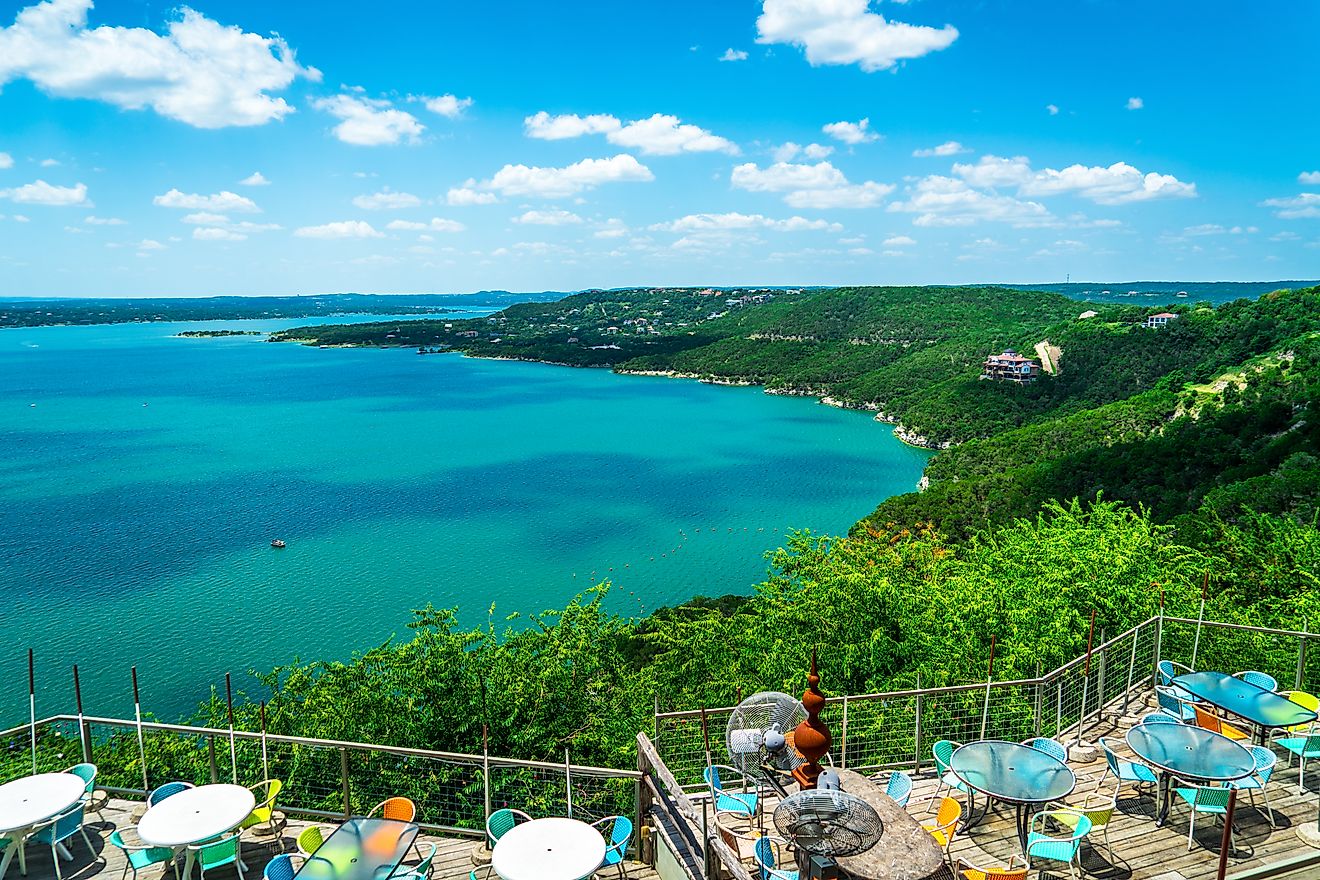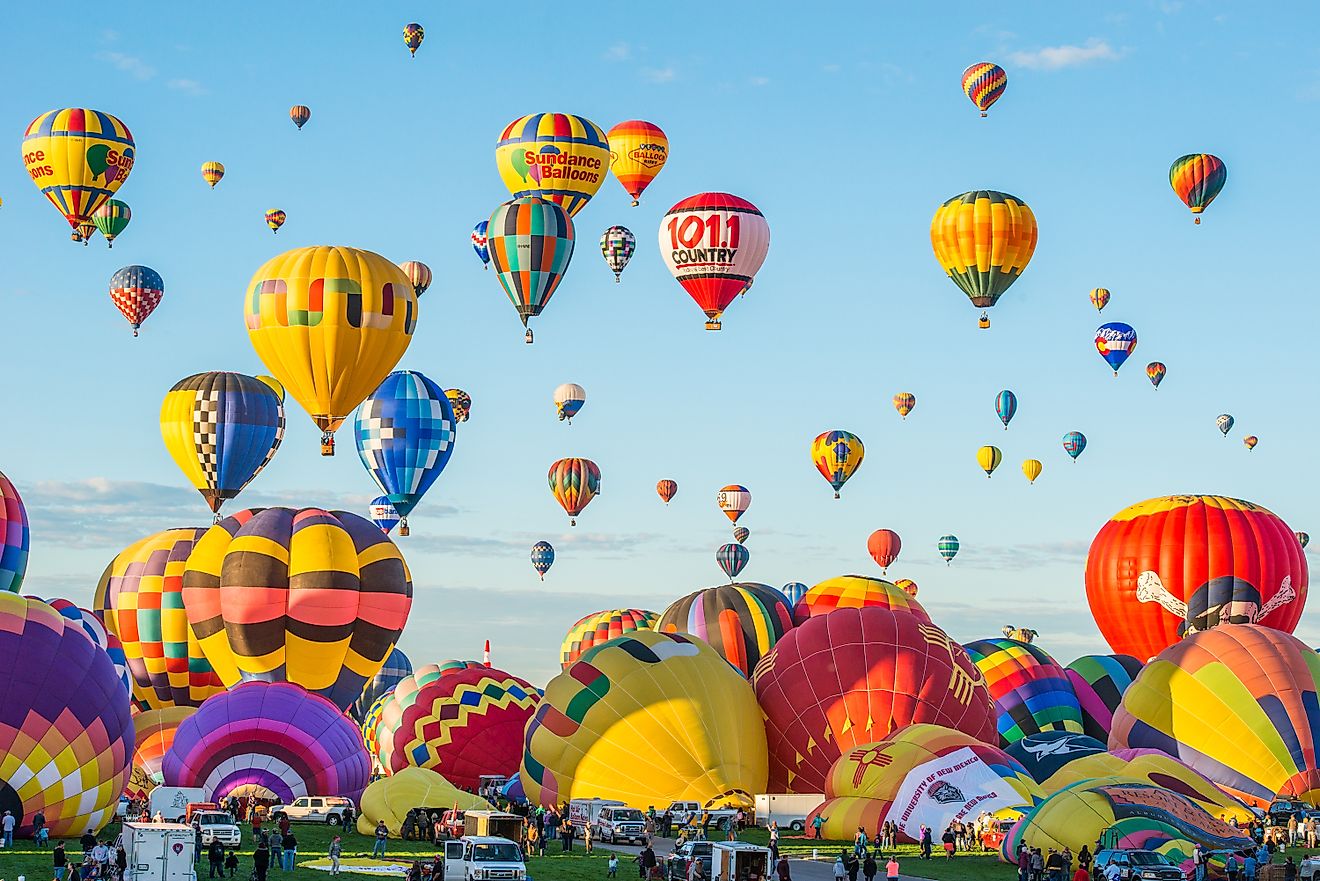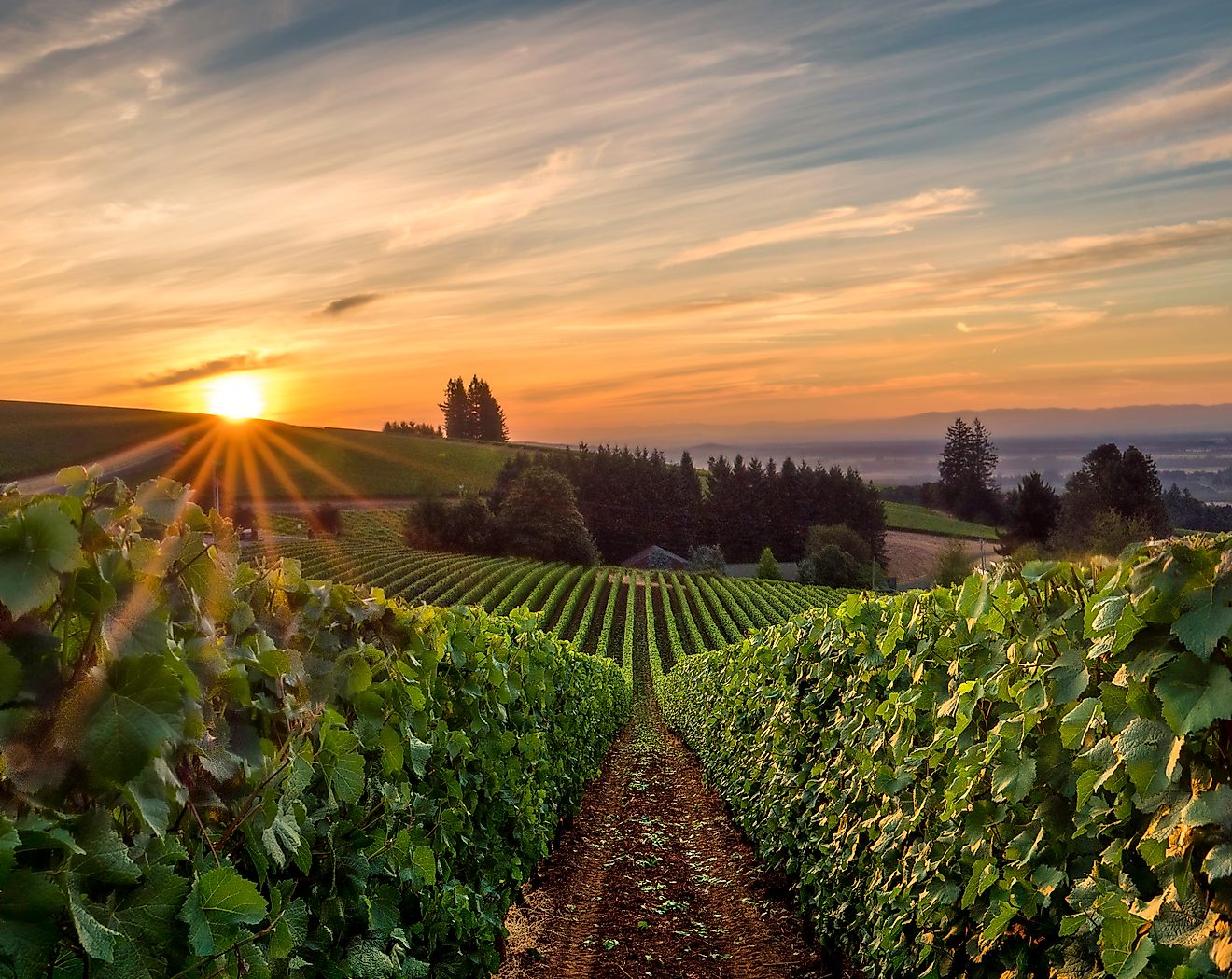
7 Dark Sky Places in Arizona for the Best Stargazing
Since the beginning of time, stargazing has been a treasured pastime, enjoyed by humans all across the globe. And looking up at the night sky is not without its benefits, either. Not only does this hobby offer feelings of calmness, but it can also help regulate your circadian rhythm. Dark Sky sanctuaries, in particular, are also good for local wildlife – keeping them safe from the light pollution that litters the sky in more densely populated areas. Those hoping to catch a glimpse of a sky full of sparkling stars will have plenty of chances to do so in Arizona. Known as the astro tourism capital of the US, Arizona is home to 6 Certified IDA (International Dark Sky Association) International Dark Sky Communities and 10 Certified IDA Dark Sky Parks. Although there is an abundance of places to choose from, the following are some of the best places for stargazing in The Grand Canyon State.
Grand Canyon National Park
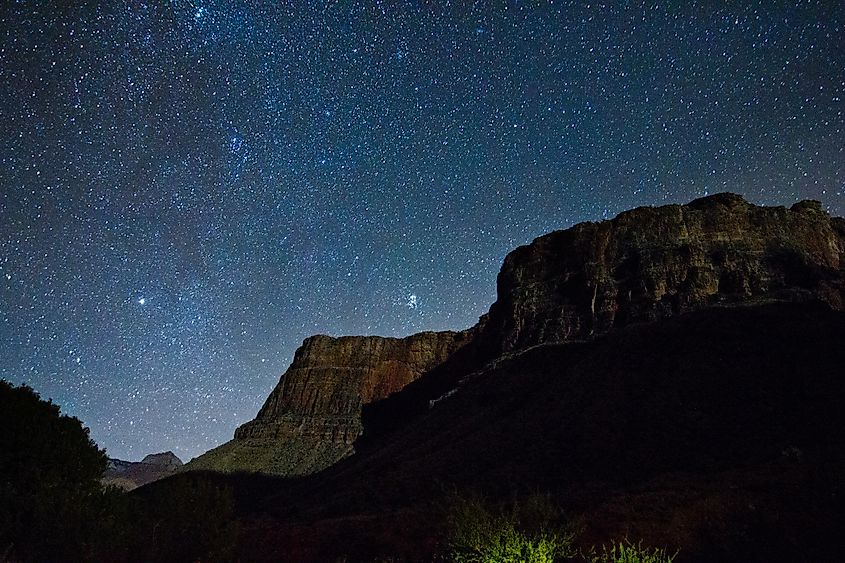
Grand Canyon night photography.
Grand Canyon National Park is a treasured gem in Arizona, drawing in millions of locals and tourists each year. Although best known for housing the Grand Canyon, this stunning park is also a perfect spot for stargazing. Park visitors can participate in a number of ranger-led night sky programs where telescopes and ‘laser-guided constellation talks’ are provided. Those who can’t make it for one of these events can still stargaze on their own, as the park is open 24/7. According to the National Park website, stargazing is best enjoyed at least 1 1/2 hours after sunset and 1 1/2 hours before sunrise.
Additionally, Mather Point, Desert View, and Cape Royal as a few of the best spots to admire the stars within the park. Anyone planning to spend a day here will find several activities to pass the time including hiking, mule riding trips, camping, fishing, and boating.
You Might Also Like: 10 Most Scenic Camping Sites In The United States
Petrified Forest National Park
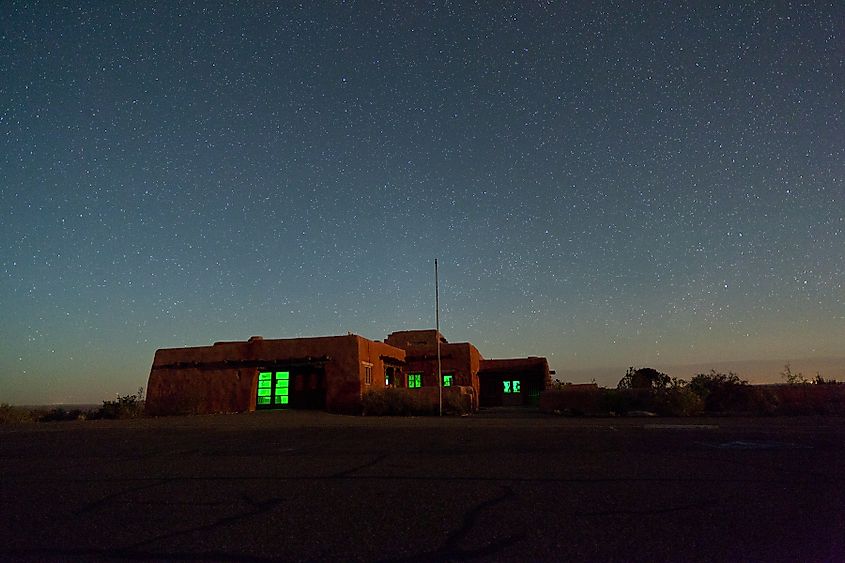
Petrified Forest NPS. Painted Desert Inn National Historic Landmark and Stars.
Nearly 200 miles from Grand Canyon National Park travelers will find the unique Petrified Forest National Park. Set amongst a stunning Painted Desert landscape, the park is filled with various Triassic fossils, geologic formations, and paleoenvironments. Of course, it’s also a hot spot for stargazing. Because Petrified Forest National Park is only open from 8 a.m. to 5 p.m. MST, visitors will need a special permit to enjoy the dark sky viewing areas. But once that permit is attained, you’re in for a real treat. On the best nights, visitors can enjoy a blanket of large stars and a clear view of the impressive Milky Way.
The park will also host occasional evening events giving participants a chance to glance up at that sparkling night sky, without having to navigate the park alone after dark. In addition to stargazing, Petrified Forest National Park also offers activities such as hiking, geocaching, backpacking, and fossil viewing.
Monument Valley Tribal Park
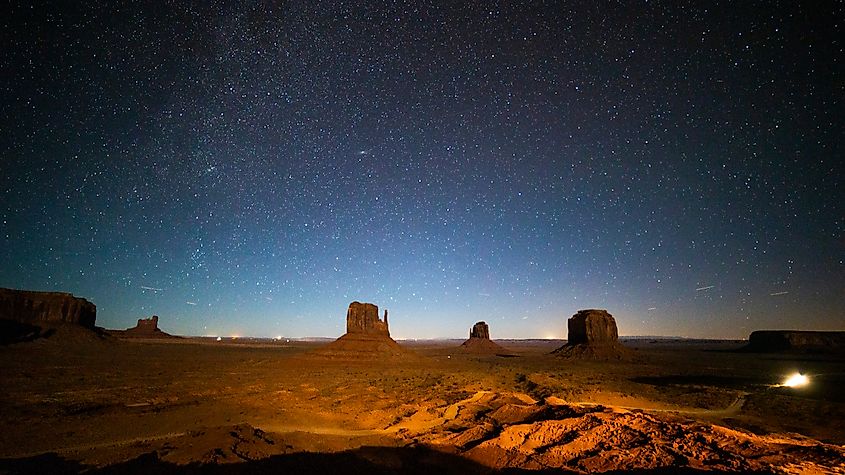
Monument valley at night.
Although Monument Valley Tribal Park doesn’t have official dark sky status from the IDA, it still offers breathtaking night sky views. Visitors who aren’t familiar with the park can book a stargazing tour where a Navajo guide will lead you to the best stargazing spots in the park. In addition to beautiful night skies, Monument Valley Tribal Park also offers activities including backcountry camping and hiking. One of the main attractions here is the unique rock formations in the Valley. For the best views of these iconic formations, visitors should plan to embark on the park's 17-mile loop scenic driving route.
Oracle State Park
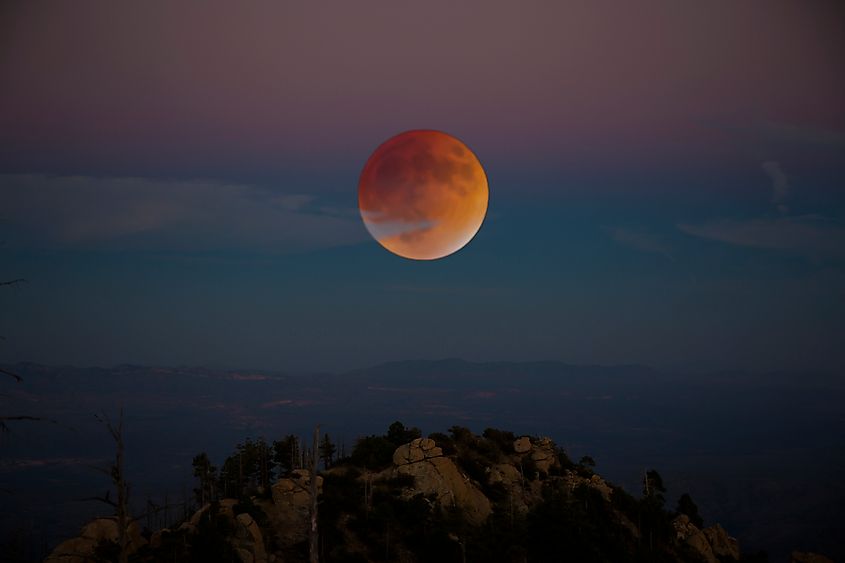
Tucked neatly into the base of the Catalina Mountains, Oracle State Park is a true gem in Arizona. It has been a designated dark sky viewing area since 2014. Although you will need a special permit to enter the park after dark, the views are worth every effort. Most nights visitors will find beautiful unobstructed views of the Milky Way – only occasionally blocked by cloud cover or the brightness of a full moon. Those not comfortable exploring on their own at night should keep their eyes glued to the Oracle State Park programs and events page, where star-gazing parties with a park guide are regularly scheduled. During the daylight hours, visitors can wander this 4,000-acre stretch of land, looking for local wildlife and enjoying 24 miles of hiking trails.
Sunset Crater Volcano National Monument

Sunset Crater Volcano national Monument, Arizona.
The Sunset Crater Volcano National Monument is a unique area best known as the site of Arizona’s most recent volcanic eruption. In addition to the beautiful volcanic rock, this national monument is also a wonderful place for stargazing in Arizona. The park hosts regular stargazing events throughout the summer where visitors can access provided telescopes, volunteer astronomers, and park rangers. During the day, park goers can enjoy hiking trails, discovery hikes, and several interpretive programs.
Wupatki National Monument
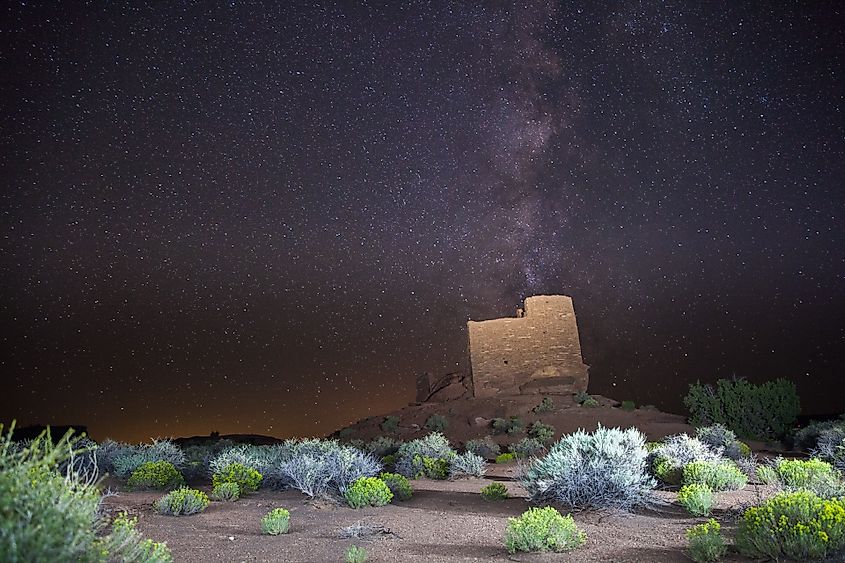
Wukoki wonder.
Although Wupatki National Monument closes its visitor center at 4:30 p.m. and the hiking trails close at sunset, visitors can still get their fill of stars here after dark. All park roads stay open 24/7 so you can drive along these roads and see the night sky from any parking lot within the park. During the day, this national monument is a great place to explore, especially for those traveling with families. Kids will have various opportunities to earn a Jr. Ranger Badge from the park. For adults, enjoy activities like hiking and admiring the remains of the stunning Pueblo architecture that can be found all throughout the park.
Flagstaff
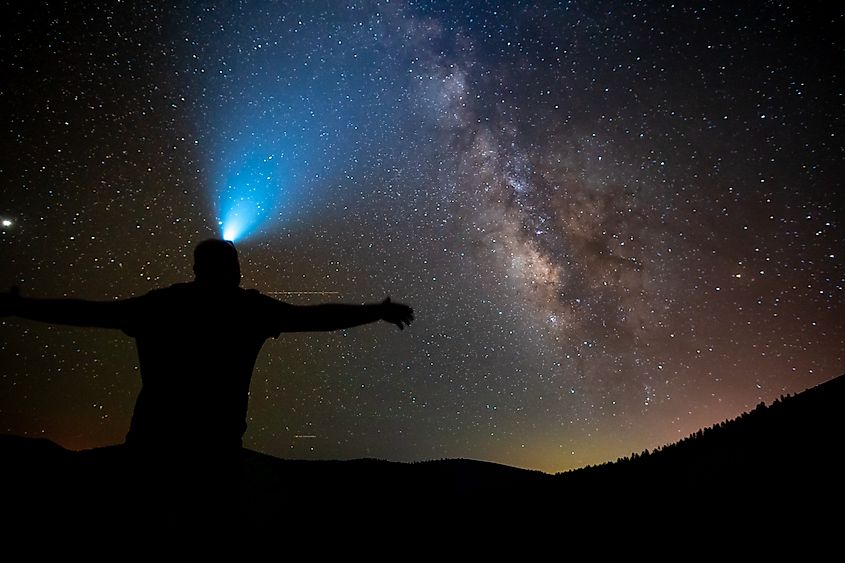
Milky Way Viewing from Flagstaff, Arizona.
Because of Flagstaff, Arizona’s ongoing efforts to limit light pollution and protect dark skies, the entire city is an IDA-designated Dark Sky City. From almost anywhere in Flagstaff travelers can look up on a clear night and see a blanket of sparkling stars covering the vast expanse of sky. Flagstaff was recognized as the world's first dark-sky city back in 2001. Perhaps one of the best places to see the stars here is at the Lowell Observatory. The astronomical observatory is one of the oldest of its kind in the US. Here, visitors can enjoy stargazing, tours, and science presentations.
In Conclusion
There’s no denying it, Arizona is one of the best places in the US to look up at the stars. With unobstructed views of the Milky Way and other breathtaking constellations, travelers should be prepared to have their breath taken away. Whether you’re checking out the Grand Canyon or searching for fossils at Petrified Forest National Park, don’t forget to secure a stargazing permit and take a look at some of the most beautiful sites in the galaxy.

